Role of Transportation Management Centers in Emergency Operations Guidebook
2.0 TMC Functions and Context for Emergency Operations
The TMC concept, initially developed for railroads and urban public transportation systems, has been in place for some time mainly because it allowed information on system operations to be in a centralized location; a function that evolved as technology for centralized monitoring and control of traffic signal systems grew.
[The TMC is] “the hub of a transportation management system, where information about the transportation network is collected and combined with other operational and control data to manage the transportation network and to produce traveler information. It is the focal point for communicating transportation-related information to the media and the motoring public, a place where agencies can coordinate their responses to transportation situations and conditions. The TMC also links various elements of Intelligent Transportation Systems such as variable message signs, closed circuit video equipment, roadside count stations, etc., enabling decision-makers to identify and react to an incident in a timely manner based on real-time data.”
Institute of Transportation Studies
University of California-Berkeley, 2005
Early TMC deployments focused on urban areas with existing freeway detection systems. The addition of cameras, electronic message signs, and communications networks has enabled TMCs to monitor and respond to incidents and other traffic disruptions.
Some TMCs also manage and dispatch Freeway (safety) service patrols (FSP) or collaborate with law enforcement agencies on FSPs to provide faster response to incidents. Their capabilities range from van services with basic capabilities such as jump-starting and tire changing to full-size wreckers with the ability to tow large commercial vehicles.

Source: Cambridge Systematics, Inc.
One of the most important TMC functions is the dissemination of information through various channels such as the dedicated 511-telephone service, web sites, electronic message signs, and direct links to media and outside private information services.
Over the past several years, private companies developed methods, mainly through feedback from probe vehicles, to estimate speeds and travel times on most of the Interstate system and many other major highways, helping TMCs with situational awareness and providing important information in emergencies.
2.1 Relevance of TMC Functions to Emergency Operations Functions
The day-to-day operations of a TMC assist with several of the Emergency Support Functions (ESF), which are developed by the Department of Homeland Security and provide the structure for coordinating interagency support in an emergency. ESF 1: Transportation and ESF 3: Public Works, which relates to the deployment of DOT engineering support, reference the capabilities and functions of TMCs. ESF 1 and ESF 3 activate transportation and public works agencies, and call upon them to assist emergency response and recovery efforts coordinated by an EOC. Access to more detail on ESFs and other incident management practices can be found in the FHWA document, Best Practices in Traffic Incident Management.
Probe Vehicle Data
The following can be used to collect probe vehicle data:
- Cell phones.
- Electronic toll tags.
- In-vehicle navigation units.
- Automated vehicle location units.
The system tracks vehicles and calculates highway speeds based on their locations at specific times. Because of privacy issues, the technologies assign an encrypted ID to the vehicles to prevent identification and discard data after it is used.
A pre-established framework of coordination and cooperation based on the ESF model is essential to leverage TMC capabilities. Figure 2.1, for instance, shows the diverse potential for information interchange between TMCs, EOCs, and other centers such as Fusion Centers.
Fusion Centers serve as focal points within the state and local environment for the receipt, analysis, gathering, and sharing of threat-related information. In this role, they empower front-line law enforcement, public safety, fire service, emergency response, public health, critical infrastructure protection, and private-sector security personnel to understand local implications of national intelligence. They also provide interdisciplinary expertise and situational awareness to inform decision-making at all levels of government. They conduct analysis and facilitate information sharing while assisting law enforcement and homeland security partners in preventing, protecting against, and responding to crime and terrorism. By utilizing the information provided by Fusion Centers, local officials can better protect their communities (Federal Highway Administration, Information-Sharing Guidebook for Transportation Management Centers, Emergency Operations Centers and Fusion Centers, June 2010, p. 4.).
Emergency Support Function (ESF) 1 – Transportation
ESF 1 provides support to the Department of Homeland Security (DHS) by participating in the following activities:
- Monitor and report status of and damage to the transportation system and infrastructure caused by the incident.
- Identify temporary alternative transportation solutions for implementation by others when systems or infrastructure are damaged, unavailable, or overwhelmed.
- Perform activities conducted under the direct authority of DOT elements as these relate to aviation, maritime, surface, railroad, and pipeline transportation.
- Coordinate the restoration and recovery of transportation systems and infrastructure.
- Coordinate and support prevention, preparedness, response, recovery, and mitigation activities among transportation stakeholders within the authorities and resource limitations of ESF 1 agencies.
Emergency Support Function (ESF) 3 – Public Works and Engineering
ESF 3 assists the Department of Homeland Security (DHS) by participating in the following activities:
- Pre-incident and postincident assessments of public works and infrastructure.
- Emergency contract support for life-saving and life-sustaining services.
- Technical assistance to include engineering expertise, construction management, and contracting and real estate services.
- Emergency repair of damaged public infrastructure and critical facilities.
- Implementing and managing the DHS/Federal Emergency Management Agency (FEMA) Public Assistance Program and other recovery programs.
Figure 2.1 Information Exchange between Transportation Centers Emergency Centers and Fusion Centers

Source: Federal Highway Administration, Information-Sharing Guidebook for Transportation Management Centers, Emergency Operations Centers and Fusion Centers, June 2010, p. 4.
2.2 TMC Preparedness Activities
TMCs undertake various preparedness activities, including detection and verification of incidents, dissemination of information, assistance with incident response, on-scene management and traffic control, coordination with maintenance activities, mapping and
GIS resources, and providing archived historical data.
2.2.1 Detection and Verification
TMCs monitor, detect, and verify incidents affecting transportation operations and safety, serve as a clearinghouse, and provide information to emergency agencies on the status of the transportation infrastructure (washed-out bridges or roadways, etc.). To obtain this information, TMCs utilize the following methods:
- ITS Technology – TMCs utilize ITS technologies such as closed-circuit television (CCTV) cameras and information from computer-aided dispatch (CAD) systems to detect the presence of incidents or emergencies on transportation facilities. The use of this technology confirms the incident occurred, enhances the assessment of incident needs, and helps with the subsequent dispatch of appropriate personnel and resources.
- Data Sources – TMCs receive and exchange information on incidents and traffic conditions with on-site responders, law enforcement, and emergency personnel. TMCs may also manage or access cell phone calls to local law enforcement and dispatchers, motorist aid call boxes, and information from automated collision notification systems (ACNS).

Source: Cambridge Systematics, Inc.
2.2.2 Dissemination of Information
TMCs collect and disseminate traveler information to the public, which helps control and smooth traffic operations and provides information to appropriate personnel for quick and efficient response during incidents and emergencies. TMCs utilize the following to disseminate information:
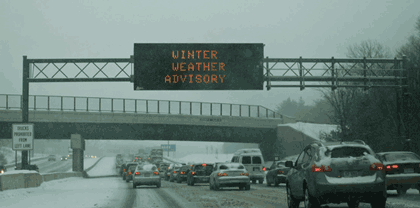
Source: Cambridge Systematics, Inc.
ETravel Information – TMCs control Dynamic Message Signs (DMS) on major roadways, which are available for use in emergencies. These signs provide motorists with information on detour routes, shelter locations, and evacuation procedures. In non-emergencies, DMS provide information on construction activity, special events, minor delays caused by traffic incidents, or expected travel times. TMCs also have small portable message signs, which mainly support construction activity, but are available during emergencies for information on detour routes or other emergency-related matters.
New technologies such as Connected Vehicle programs will allow TMCs to provide authorized information to drivers in their vehicles. According to the U.S. DOT’s Research and Innovative Technology Administration (RITA) the goal of the Connected Vehicle Research Program is to "to achieve a vision of a national, multimodal surface transportation system that features a connected transportation environment among vehicles, the infrastructure and passenger portable devices. This connected environment will leverage technology to maximize safety, mobility, and environmental performance."
Pretrip Information – TMCs provide motorists with information prior to a trip on roadway conditions, infrastructure damage, and evacuation routes through 511 systems and traveler information web sites. TMCs also provide information through Highway Advisory Radio and media partnerships with AM/FM Radio, and televised announcements. Providing pretrip information can reduce traffic demand at the incident scene and direct motorists to alternative routes, emergency shelters, and/or evacuation points.
2.2.3 Incident Response
TMCs use ITS technologies and communication linkages with other agencies and media partnerships to identify, verify, and track incidents and emergency events, which allows for information exchange and coordination among emergency responders, and law enforcement.
Coordinated Response – TMCs, once they detect and verify an incident, can perform a variety of functions during a coordinated response, including the following:
- Play an active role in incident clearance by relaying information to Freeway (Safety) Service patrols, police, responders, and tow and recovery operators.
- Improve the timeliness of response during nontraffic incidents such as industrial accidents, civil disruption, and natural disasters.
- Use improved methods and technologies such as enhanced computer-aided dispatch (E-CAD) and dual or optimized dispatch procedures to direct emergency responders to routes with the least amount of traffic or other disruptions.
- Reduce traffic demand at the incident scene and clear the path for responders, by utilizing traveler information resources to alert motorists to avoid certain routes and/or destinations and present alternative paths or transportation modes.
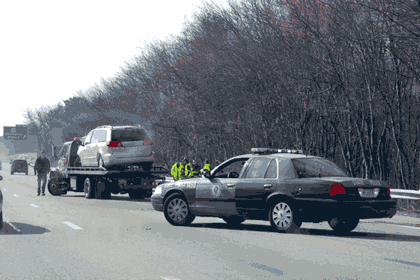
Source: Cambridge Systematics, Inc.
Operational and Demand Strategies for Emergency Response – The TMC can also utilize ITS resources to expedite incident and emergency response through the following:
- Coordinate with local agencies or utilizing systems such as responsive signal operations and emergency vehicle signal preemption/priority to optimize emergency responder access to and from the incident scene.
- Update information on message signs and other media (web sites, radio, TV, and 511) to reduce demand at incident scene, clear the path for responders, and divert traffic to alternative routes and/or destinations.
- Coordinate with transit agencies and/or tolling authorities to inform motorists and the public of strategies (free transit services, opening tolling lanes) that divert traffic to alternative routes and modes of transportation. This effort can relieve demand at the incident, help motorists avoid certain facilities during planned events or work zones, and direct travelers to evacuation routes and shelters.
Innovative Strategies for Improved Emergency Response – TMCs may also establish certain procedures or programs that improve emergency response, including the following:
- Manage instant tow dispatch procedures and towing and recovery zone-based contracts with specific contractors to speed incident response. This expedites dispatch, optimizes response procedures, and reduces travel distances.
- Coordinate equipment staging areas and preposition equipment to enhance the availability of and reduce the wait time for specialty equipment that may be slow to mobilize.
- Provide resources, including trucks and support vehicles by coordinating with agency maintenance.
2.2.4 Coordination with Maintenance Activities
TMC maintenance crews are generally responsible for clearance and repair of transportation infrastructure, which enables the TMC to receive accurate information for better-informed decision-making. Maintenance activities can support coordination through the following:
- Maintain, monitor, and repair vital infrastructure, equipment, and other assets such as cameras, detectors, and message signs that are essential to the TMC for monitoring traffic, detecting and verifying incidents, and responding to various emergencies.
- Aid in the detection and verification of incidents, and response activities.
2.2.5 Mapping and GIS Resources
TMCs and other partner agencies are often responsible for mapping and GIS-related resources. Many TMCs utilize these tools to better manage ITS equipment and service vehicles, track and monitor maintenance work services, and disseminate important information on incidents, emergencies, and travel conditions to the public, responders, and law enforcement.
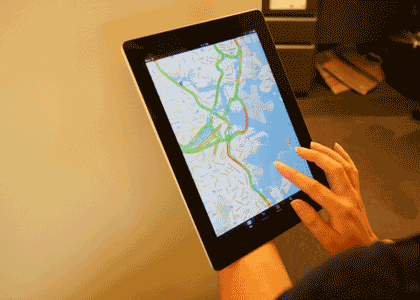
Source: Cambridge Systematics, Inc.
2.2.6 Archived Historical Data
Many TMCs are placing greater emphasis on analyzing and archiving data on volumes, speeds, incidents, construction activities, traveler information messages, weather conditions, or special events which can be used for emergency response operations. For instance, data can measure incident clearance or emergency response times or identify strategies or elements of an area’s response plans that may need adjustments or improvements. Additionally, archived historical data can be used to improve emergency and disaster preparedness activities by identifying detour routes and evacuation routes and strategies.
2.3 TMC Preparedness Checklist
The TMC can use the following checklist to evaluate their current status in the area of preparedness.
The TMC conducts the following preparedness activities (check all that apply):
Incident Response
❑ Detects and verifies incidents.
❑ Disseminates information through (check all that apply):
❑ Dedicated 511 telephone service.
❑ Web sites.
❑ Electronic message signs.
❑ Direct links to the media and outside private information services.
❑ Pretrip information.
❑ ETravel Information.
❑ Relays information to Freeway (Safety) Service patrols, police, responders, and tow and recovery operators.
❑ Improves the timeliness of response.
❑ Uses improved methods and technologies to direct emergency responders to routes with the least amount of traffic or other disruptions.
❑ Reduces traffic demand at the incident scene and clears the path for responders.
❑ Coordinates with local agencies or utilizes equipment and devices to optimize emergency responders’ access to and from the incident scene.
❑ Updates information on message signs and other media (web sites, radio, TV, and 511) to reduce demand at incident scene, clear the path for responders, and divert traffic to alternative routes and/or destinations.
❑ Coordinates with transit agencies and/or tolling authorities to inform motorists and the public of strategies (free transit services, opening tolling lanes) that divert traffic to alternative routes and modes of transportation.
❑ Manages instant tow dispatch procedures and towing and recovery zone-based contracts with specific contractors to speed incident response.
❑ Coordinates equipment staging areas and prepositioning of equipment to enhance the availability of and reduce the wait time for specialty equipment.
❑ Provides resources, including trucks and support vehicles, by coordinating with agency maintenance.
Other Coordination
❑ Maintains, monitors, and repairs vital infrastructure, equipment, and other assets.
❑ Aids in the detection and verification of incidents, as well as in response activities.
❑ Provides mapping and GIS resources.
❑ Provides archived historical data.
2.4 TMC Support of the Incident Command System
The Incident Command System (ICS), which is part of the broader NIMS, is a standardized, all-hazards incident management approach that provides the following:
- The integration of facilities, equipment, personnel, procedures, and communications that operate within a common organizational structure;
- A coordinated response among various jurisdictions and functional agencies, both public and private; and
- The identification of common processes for planning and managing resources.
ICS is a scalable and modular approach for use during incidents of any type, scope, and complexity. It allows users to adopt an integrated organizational structure for incident management to match the complexities and demands of single or multiple incidents, and guides the process for planning, building, and adapting that structure. Government at the Federal, state, tribal, and local levels, nongovernmental organizations, and the private sector use ICS. The typical ICS structure facilitates activities in five major functional areas: command, operations, planning, logistics, and finance/administration.
TMCs are an integral part of ICS because they monitor and control traffic flow when a disruption in roadway system operations occurs. FHWA’s Simplified Guide to the Incident Command System for Transportation Professionals introduces the ICS concept to transportation officials whose expertise, assistance, or material is needed during a highway incident. A growing number of transportation agencies are adopting ICS as evidenced by a 2002 FHWA survey that found 64 percent are using ICS to manage traffic incidents.
While ICS supports incidents of all sizes, a formal activation is not necessary for smaller incidents since a single police car and tow truck can usually handle them. Figure 2.2 illustrates this concept.
TMCs should undertake advance planning and preparation consistent with NIMS and ICS. By utilizing FHWA’s Simplified Guide to the Incident Command System for Transportation Professionals to lay out activities (Figure 2.3), TMCs can put into place the strategic, tactical, and support levels necessary prior to an incident and ensure adoption and understanding of ICS and successful general TMC planning and coordination practices.
2.4.1 Conduct Strategic-Level Actions on Preparedness and Resource Management
To improve support to emergency response agencies in way that is consistent with ICS and NIMS, TMCs should conduct strategic-level actions on preparedness and resource management, and provide support for communications and information management. Following is a checklist of the recommended TMC strategic actions:
- Planning – Develop plans and procedures to support incident response activities, including descriptions of agency relationships, event classification and/or notification practices, and position and equipment checklists.
- Training and Exercises – Design, develop, and conduct training and discussion-based exercises such as workshops, seminars, and tabletop exercises for personnel as appropriate to ensure familiarity and understanding with plans and procedures.
- Personnel and Equipment Certification – Certify the required personnel and equipment are prepared and in working order.
- Mutual-Aid Agreements – Develop mutual-aid agreements with appropriate agencies and jurisdictions to ensure resource sharing and cooperation.
- Resource Typing and Identification – Clearly identify and type resources to ensure accurate TMC understanding of the available resources, their locations, and capabilities.
- Mobilization and Reimbursement – Develop and promulgate procedures for resource mobilization, demobilization, and reimbursement.
- Tactical-Level Actions on ICS – Develop documentation to support tactical-level actions.
Figure 2.2 Highway Incidents Requiring Formal Use of ICS

Source: FHWA Simplified Guide to the Incident Command System for Transportation Professionals.
Figure 2.3 Components of the NIMS Process

Source: FHWA Simplified Guide to the Incident Command System for Transportation Professionals.
2.4.2 Support-Level Actions for Communications and Information Management
To provide support for communications and information management, TMCs should conduct the following activities:
- Information Policy – Develop a policy for the TMC’s handling and securing of information, including any interoperable communication among the TMC, public safety agencies, and any other necessary entities.
- Common Terminology – Develop policies and procedures for use of common terminology to ensure understanding between agencies and avoid agency-specific jargon that may impede communications.
- Communications Systems – Develop communications systems to support the TMC’s mission and facilitate interoperable communication with other agencies involved in incident response.
Checklist of Recommended TMC Strategic Actions
- Planning.
- Training and Exercises.
- Personnel and Equipment Certification.
- Mutual-Aid Agreements.
- Resource Typing and Identification.
- Mobilization and Reimbursement.
- Tactical-Level Actions on ICS.
2.5 Support for Incident Command System Checklist
The TMC can use the following checklist to evaluate their current status in support in the incident command system by doing the following (check all that apply):
Preparedness and Resource Management Checklist
❑ Uses the NIMS and ICS as a way to plan and manage incidents and emergencies.
❑ Develops plans and procedures to support incident response activities.
❑ Designs, develops, and conducts training and discussion-based exercises.
❑ Certifies that the required personnel and equipment are prepared and in working order.
❑ Develops mutual-aid agreements with appropriate agencies and jurisdictions to ensure resource sharing and cooperation.
❑ Identifies and categorizes resources to ensure accurate TMC understanding of the available resources, their locations, and capabilities.
❑ Develops and promulgates procedures for resource mobilization, demobilization, and reimbursement.
❑ Develops documentation to support formal activation of ICS for incidents warranting activation and for implementation of the command and control functions.
Communications and Information Management
❑ Develops a policy for the TMC’s handling and securing of information.
❑ Develops policies and procedures for use of common terminology.
❑ Develops communications systems to support the TMC’s mission and facilitate interoperable communication.
2.6 TMC Support of Emergency Operations
The capabilities and functions of a TMC can support to the needs of EOCs because they have access to established and widespread cameras, sensors, and communications networks. The TMC can help the EOC overcome some of the challenges that are inherent in a temporary operation.
TMCs can support small- and large-scale traffic incidents, planned events, and large-scale regional emergencies by developing emergency operations procedures that do the following:
- Detect events and issue notifications to the appropriate public safety entities;
- Monitor and relay TMC camera and sensor information (roadside weather information, traffic queues, etc.) to first responders as requested;
- Provide communications support using TMC systems and capabilities as requested;
- Provide emergency response resources, including personnel and equipment as requested; and
- Assist with coordination involving specialized agencies (hazardous materials spill, fire evacuations, and transportation closures).
The following are ways TMCs can provide additional support for large-scale planned events and large-scale emergencies (hurricanes, blizzards, earthquakes, terrorist attacks, and industrial accidents):
- Transition from providing support for a planned event to providing response to an unplanned incident occurring at the event;
- Refocus, to the extent possible, camera and sensor information on an event, and monitor and relay to first responders as requested;
- Facilitate evacuations by suspending highway work or projects on evacuation routes and provide equipment and personnel resources to assist in the staffing and implementation of evacuation Traffic Control Points; and
- Provide response resources, including personnel and equipment as requested by the Emergency Operations Center or the incident or the unified commander in the field.
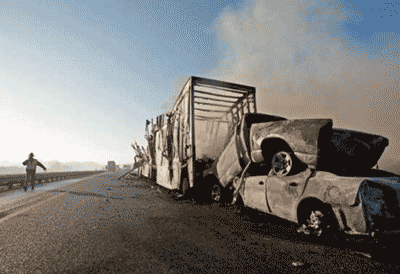
Photo courtesy of Matt Stamey/The Gainesville Sun.
As visibility reaches near zero due to a massive brush fire, a fatal multivehicle accident occurs near Gainesville, Florida. The Florida Highway Patrol and the Florida Department of Transportation, colocated in the Transportation Management Center, work together to close Interstate 75, inform the traveling public, and manage the incident.
2.7 Support for Emergency Operations Checklist
The TMC can use the following checklist to evaluate their current status in support of small- and large-scale events and emergencies by doing the following (check all that apply):
❑ Detects events and issues notifications to the appropriate public safety entities.
❑ Monitors and relays TMC camera and sensor information (roadside weather information, traffic queues, etc.) to first responders as requested.
❑ Provides communications support using TMC systems and capabilities as requested.
❑ Provides emergency response resources, including personnel and equipment as requested.
❑ Assists with coordination involving specialized agencies (hazardous materials spill, fire evacuations, and transportation closures).
❑ Transitions from providing support for a planned event to providing response to an unplanned incident occurring at the event.
❑ Refocuses, to the extent possible, camera and sensor information on an event, and monitors and relays to first responders as requested.
❑ Facilitates evacuations by suspending highway work or projects on evacuation routes and provides equipment and personnel resources to assist in the staffing and implementation of evacuation Traffic Control Points.
2.8 Colocation of TMC and EOC
Because an emergency incident requires cooperation from a variety of agencies, some TMCs and EOCs colocate to provide greater communication and coordination, and allow for the leveraging of resources. TMCs should explore the feasibility of colocating with the state or region EOC, which may depend on the laws, operational configurations, and available facilities. Some important factors to consider include the following:
- Colocation provides backup power, communications, and sheltering requirements that allow the TMC to continue operations in adverse conditions;
- EOCs are activated only in cases of emergency or during some special events, and even then staffing will vary dramatically according to the nature and severity of the incident;
- An EOC is typically located away from hazards that may impact or preclude its use during an emergency; and
- Existing facilities that can accommodate both the systems and space needs of a TMC and EOC are rarely available, which may require new construction and configuration.
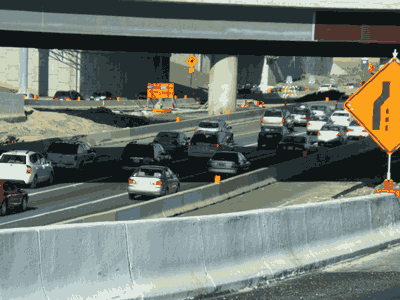
Source: Cambridge Systematics, Inc.
2.8.1 Utilization of Virtual EOCs
Virtual EOCs, which refer to utilization of technologies and procedures between physically separated personnel operating as one entity, enable multiple EOCs to coordinate activities. TMCs should consider utilizing the “virtual EOC” concept to achieve closer integration of the TMC with the EOC. Video conferencing, voice conferencing, and file sharing servers are among the technologies that facilitate a virtual EOC concept. In addition, procedures and documentation must be developed that will support the activation, operation, and demobilization of a virtual EOC.